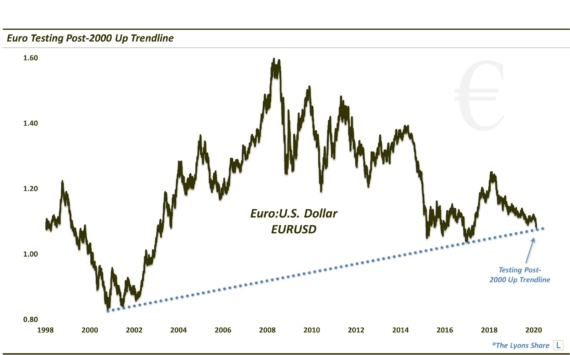Chinese Equity Rally Getting Dicey?

The 12-month, low-volatility rally in Chinese stocks may be in jeopardy.
From mid-2014 to early 2016, it was the best of times and it was the worst of times for Chinese
stocks. In June
2014, following a historic bout of low volatility,
the Shanghai Composite (SSEC) launched a historic rally, climbing 150% in just 12 months. It was another story,
however, over the following 7 months as the SSEC was subsequently cut in half.
This roller coaster of an episode had the Chinese market the “talk of the town”
among equity circles during that period. Over the past year, however, it has been quite
a different story as just about the only “talk” emanating from the
Chinese market has been crickets chirping.
The SSEC has managed to tack on about 20% during this time. However, more than half of that occurred in just a few days following its early
2016 low. Additionally, its climb has been marked by extremely low volatility as the SSEC has been contained within a rising channel roughly just 10% wide. The lower bound of this channel is a well-defined Up trendline connecting the lows since January 2016. However, if you extend it back further, it intersects precisely at the lows back in mid-2014 as the parabolic rally was getting under way.
We first noted this trendline in September when we posted that the SSEC was in the midst of testing it. We wondered if “This Sleeping Dragon Was Ready To Awaken?”. As it turns out, the relative snooze-fest would continue as the SSEC would hold the trendline and continue its shallow advance. After a solid bounce, the index has returned to, presently, test the trendline once again. And, in fact, it may well be in the process of breaking the trendline this time.

Here’s a closer look at the test/break.

It is said that periods of extremely low volatility beget extremely volatile periods. That certainly was the case in 2014. Whether it be the case again here in early 2017 remains to be seen. If we do see a pickup in volatility, though, we have some concerns that it will include predominantly lower prices. What is the cause for such concern? Well, the potential present trendline break, for starters. However, even before a potential breakdown, we have been on the lookout for lower prices.
One thing that has been a red flag for us is the low volatility itself over the pat 12 months. Specifically, the shallowness of the bounce, particularly when compared to the preceding descent, has the hallmarks of a dead-cat bounce, i.e., a weak and unsustainable mean-reversion rally. In our September post, we mentioned that even if the rally was destined to fail, “a retracement closer to the mid-3200 level would have been a modest expectation for this post-January dead-cat bounce.” At the time, the SSEC was trading around the 2990 level. It would indeed subsequently go on to trade as high as 3283 at the end of November.
However, it has failed to follow through any higher higher than that. And currently, with that upside target satisfied, there is less reason to expect further upside in the immediate-term from a dead-cat bounce. And at this point, with the trendline potentially being breached, the SSEC looks increasingly vulnerable to more downside. As we also suggested in the September post, a break of the trendline could result in a test of the early 2016 lows near 2700 – perhaps swiftly.
Of course, if the dead-cat interpretation is incorrect, Chinese stocks may well continue on with their ascent. However, considering the evidence at hand, that path is looking rather dicey at this point.
_____________
More from Dana Lyons, JLFMI and My401kPro.
The commentary included in this blog is provided for informational purposes only. It does not constitute a recommendation to invest in any specific investment product or service. Proper due diligence should be performed before investing in any investment vehicle. There is a risk of loss involved in all investments.


